Table of content
Kimchi, the quintessential Korean fermented vegetable dish, holds a special place in the culinary world. Its tangy, spicy, and slightly sour flavor profile is a testament to the art of preservation and flavor enhancement through fermentation. Among the various vegetables used in kimchi, radishes (often referred to as mu or kkakdugi radishes) play a prominent role, particularly in variations like kkakdugi, a type of chopped radish kimchi. This guide aims to empower you with the knowledge and skills necessary to perfectly pickle Korean radish for kimchi, ensuring a delicious and authentic end result.
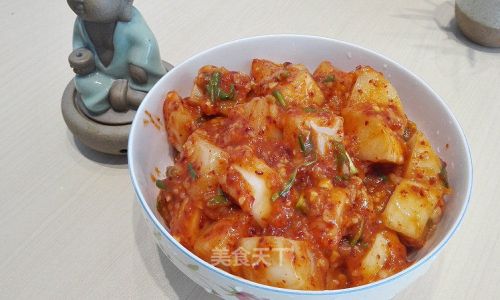
Understanding the Basics
Before diving into the recipe, it’s crucial to grasp the fundamental principles behind kimchi-making. Kimchi’s fermentation process relies on lactic acid bacteria, naturally present on vegetables and in the salt brine, to convert sugars into lactic acid. This not only preserves the vegetables but also enhances their flavor, creating a complex and umami-rich profile.
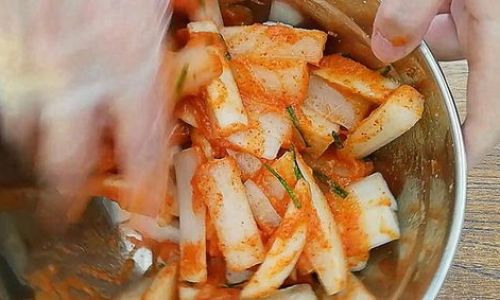
Ingredients and Tools
Ingredients:
- Radishes: Choose fresh, firm radishes with smooth, unblemished skin. Korean radishes (daikon or Chinese radishes) are ideal but regular radishes can also be used.
- Salt: For drawing out moisture and creating a brine that aids fermentation.
- Garlic and Ginger: These aromatic roots add depth and warmth to the kimchi.
- Red Pepper Flakes: Korean gochugaru provides the signature heat and color. Adjust the amount to suit your taste preference.
- Fish Sauce (Jeotgal): Adds a savory, umami flavor. Anchovy sauce or a vegetarian alternative like kelp sauce can be used.
- Sugar or Honey: A small amount balances the acidity and enhances overall flavor.
- Rice Vinegar or Apple Cider Vinegar: Optional, to adjust acidity levels.
- Scallions and Green Onions: For freshness and crunch.
- Carrots: Optional, for added color and sweetness.
- Sesame Seeds and Sesame Oil: For garnish and added richness.
- Water: For mixing with salt to create a brine.
Tools:
- Large Mixing Bowl: For preparing and mixing the ingredients.
- Sharp Knife: For chopping the vegetables.
- Clean Jar or Crock: Glass or ceramic containers with tight-fitting lids are best for fermentation.
- Weights: Clean stones, smaller jars, or fermentation weights to keep the vegetables submerged.
- Clean Cloth or Paper Towel: For covering the jar during initial stages if needed.
- Rubber Bands: To secure the cloth or paper towel.
Step-by-Step Guide
Preparation of Radishes
- Cleaning: Thoroughly wash the radishes under running water. Remove any dirt or roots.
- Cutting: Depending on your preference, you can slice the radishes into thin rounds, matchsticks, or small cubes. For kkakdugi, chopping into bite-sized pieces is typical.
Salting and Brining
- Salting: In a large mixing bowl, sprinkle the chopped radishes generously with salt. The salt ratio is approximately 2-3% of the radish weight. Mix well to ensure even coverage.
- Brining: Let the salted radishes sit for about 1-2 hours, stirring occasionally. This draws out moisture, creating a natural brine.
Draining and Rinsing
- Draining: After the salting period, transfer the radishes to a colander placed over a bowl to drain excess liquid. Let it sit for about 30 minutes to an hour.
- Rinsing: Rinse the radishes under cold water to remove excess salt. Pat them dry using a clean kitchen towel or paper towels. Be careful not to squeeze out all the moisture as some is beneficial for fermentation.
Preparing the Seasoning Paste
- Grinding Aromatics: In a food processor or using a mortar and pestle, grind together garlic, ginger, and a small portion of the red pepper flakes until smooth.
- Mixing Seasonings: In a bowl, combine the ground aromatics with the remaining red pepper flakes, fish sauce, sugar or honey, and a splash of vinegar if using. Adjust seasoning to taste.
Combining Ingredients
- Mixing: Add the seasoning paste to the drained radishes. Incorporate sliced scallions, green onions, and any optional carrots. Mix thoroughly until all the vegetables are evenly coated with the seasoning.
Packing and Fermentation
- Packing: Transfer the seasoned radish mixture into the prepared jar or crock. Press down firmly to pack tightly and release more juices. Ensure the vegetables are submerged in their own liquid.
- Submerging: If there isn’t enough liquid to fully cover the vegetables, you can make a quick brine by dissolving a small amount of salt in water and adding it to the jar. Use weights to keep the vegetables submerged.
Initial Fermentation
- Covering: If using a jar with an airtight lid, slightly loosen it to allow gas exchange. Alternatively, cover the jar with a clean cloth or paper towel secured with a rubber band.
- Placement: Place the jar in a cool, dark place away from direct sunlight. Ideal temperatures for fermentation are between 68-75°F (20-24°C).
Monitoring and Tasting
- Bubbles and Smell: After a few days, you should start seeing bubbles forming and a distinctive kimchi aroma developing. This indicates active fermentation.
- Tasting: Begin tasting the kimchi after about 3-5 days. The longer it ferments, the more sour and tangy it will become.
Refrigeration and Storage
- Stopping Fermentation: Once you reach your desired flavor profile, transfer the jar to the refrigerator. Cold temperatures slow down the fermentation process, allowing you to store the kimchi for weeks without it becoming overly sour.
- Burping: Occasionally, open the jar to release built-up gases.
Tips for Success
- Sanitation: Ensure all tools and containers are clean to prevent contamination.
- Consistency: Using precise measurements and high-quality ingredients ensures consistent results.
- Experimentation: Feel free to adjust the seasoning to your liking. Adding fruits like pear or apple can add sweetness and complexity.
- Troubleshooting: If the kimchi becomes too salty, add more vegetables or a bit of water. If it’s too sour, refrigerate immediately to halt further fermentation.
Conclusion
Mastering the art of kimchi radish pickling is not just about following a recipe but understanding the science and art behind fermentation. By carefully selecting ingredients, meticulously preparing them, and monitoring the fermentation process, you can create a vibrant, flavorful batch of kimchi that brings a burst of Korean cuisine’s essence to your table. Whether you’re a seasoned chef or a home cook eager to explore new culinary horizons, this guide equips you with the knowledge and skills to confidently pickle Korean radishes for a truly authentic kimchi experience. Enjoy your fermentation journey and savor every tangy, spicy bite!
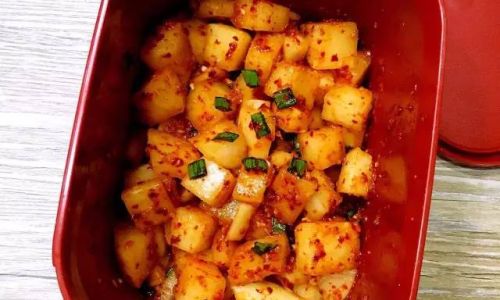
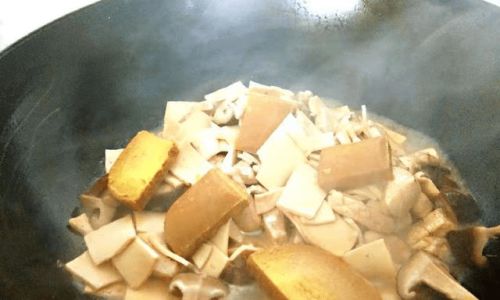
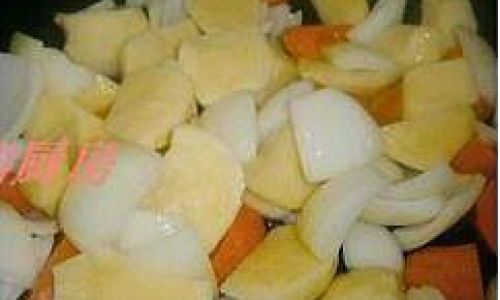
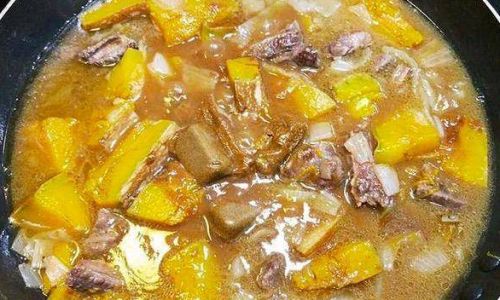
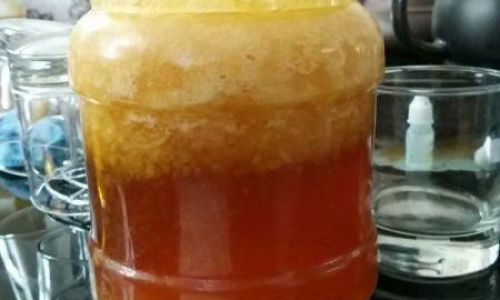
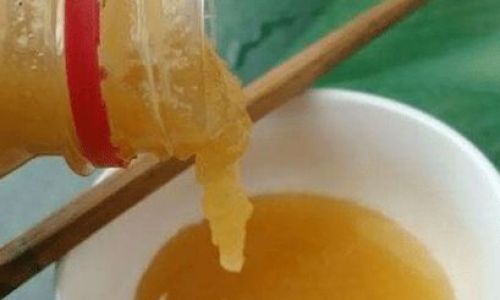
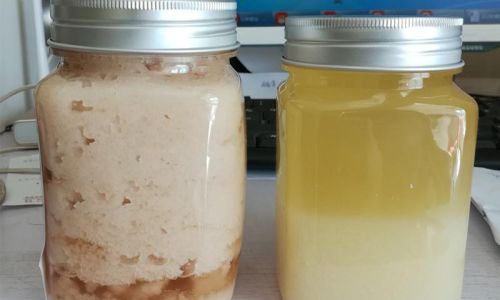
0 comments